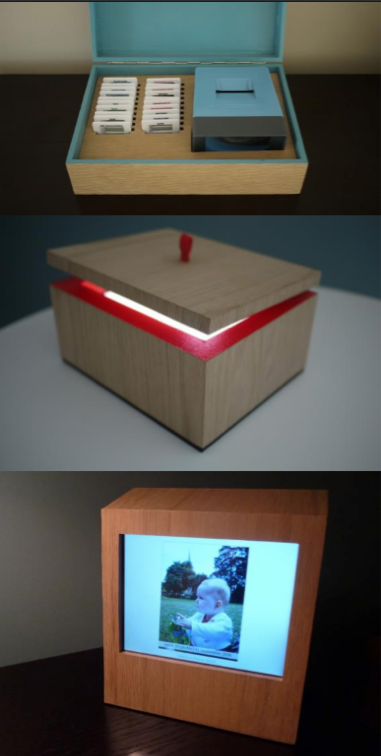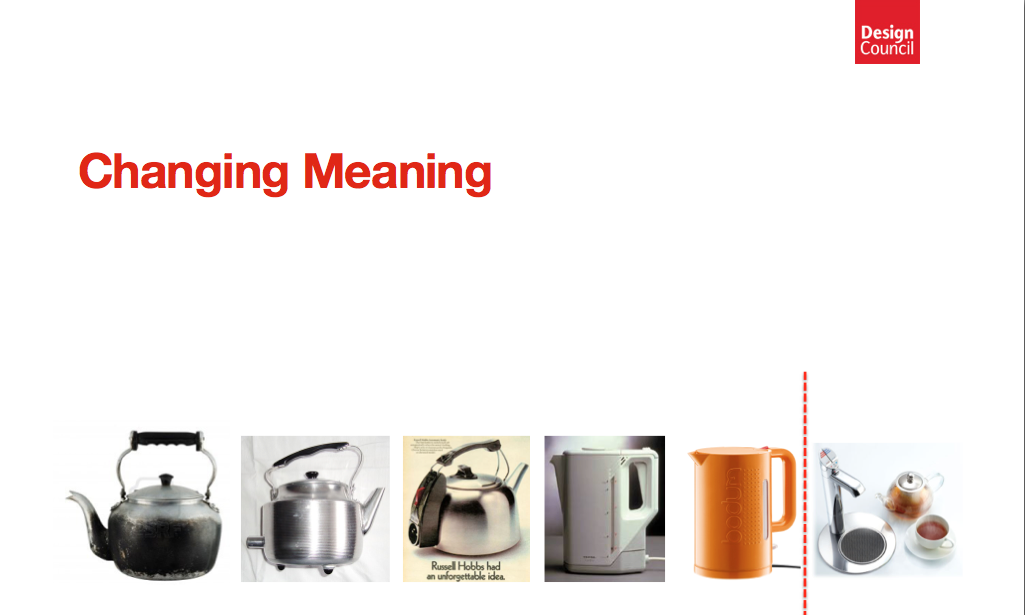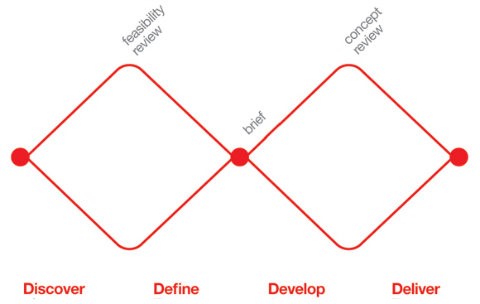ResearchNow Event - Design-led Innovation
“People never wanted the kettle, they wanted hot water,” says Mat Hunter, Chief Design Officer at the Design Council. Disruptive design is not about incremental improvements. It’s about that moment of realisation, the lightning bolt that hits when you observe your customers and discover you are trying to solve the wrong problem.
Talk to people, embrace their humanity, ask better questions and create a better solution: these were the main lessons from Microsoft’s recent event, ResearchNow: Design-led Innovation, held at Modern Jago, a hip, converted school, in London’s ‘Silicon Roundabout’ district.
“It’s where all the cool kids play,” commented one attendee. With speakers like Marek Reichman, head of design at Aston Martin, and Dave Coplin, Chief Envisioning Officer at Microsoft, they were not wrong.
Rethinking design
Let’s think about kitchen technology: in 1963 Honeywell launched the Kitchen Computer with the tagline, “If she can only cook as well as Honeywell can compute.” None of them sold. It was “perverse” says Genevieve Bell in The Atlantic, because it paid no attention to how people actually inhabited their kitchens. (The $10,000 price tag didn’t help either.)
Now consider the Wave Timer: a smartphone app that lets you turn its alarm timer off by waving your hand over the phone. Developers have watched people in their kitchens; they have seen them getting their hands dirty and then interrupting their cooking to wash them, before touching their phone. They have then used technology to eradicate this irritation, allowing people to get on with what they are in the kitchen for: cooking. That is design-led innovation: observing a real-world problem and finding an ‘obvious’ solution to it.
Industrial anthropology
Every talk at Microsoft’s event came back to the human element: individual consumers, real people with emotions and motivations. Mat Hunter acknowledged that it’s scary for big corporations to think they can learn from observing and talking to just two or three people, but often it is small, personal interactions that are the most insightful. Also, you can quickly and cheaply cull bad ideas based on early observation a small panel of trial customers.
Get personal
Consumers are more design-savvy now than ever before, so in order to innovate successfully and generate revenue, you need to consider how your business relates to the personal. The secret to design leadership is emotion, according to Aston Martin’s Marek Rechiman. He should know: their brand has survived seven bankruptcies because of the powerful emotional attachment felt by its fans.
 Richard Banks’ research at Microsoft Research Labs exemplifies the ability to find inspiration in the individual. He and his team have studied the relationship between physical objects and memory – that treasured keepsake or family heirloom, for example. His team has been exploring digital histories and how they might serve a similar role. They observed people in their homes and worked back from this ‘industrial anthropology’ to design concepts.
Richard Banks’ research at Microsoft Research Labs exemplifies the ability to find inspiration in the individual. He and his team have studied the relationship between physical objects and memory – that treasured keepsake or family heirloom, for example. His team has been exploring digital histories and how they might serve a similar role. They observed people in their homes and worked back from this ‘industrial anthropology’ to design concepts.
Most manufacturers go the other way: starting with a design and pushing blindly towards people’s homes.
Objects like photo albums and boxes of sentimental items sat naturally in peoples’ homes, ready to bring out to show people, but also as a physical reminder of their content. Richard’s design concentrated on using natural materials that did not “scream technology”, so that digital content could be more approachable.
Ask the right questions
Every interaction with a brand occurs within a wider story for the consumer: the trick to disruptive design is being able to step back see it so that your product can fit more seamlessly into an individual’s narrative. Mat Hunter described this process of redefining the brief as the ‘double diamond’. It is all too easy to stay within the second diamond, trying to answer the brief, but successful innovation occurs when you take a step back into the first diamond, and make the brief better.
Fred Warren, Microsoft consultant, illustrated this perfectly during his presentation with the case of British Airways. They remained focused on continually improving the in-cabin experience, always developing and delivering within the second diamond. Then Virgin Atlantic came along and decided to rediscover what was important to customers and realised the brief should focus on the experience of the whole journey from A to B. So they added limos, glamorous lounges, massages and all the rest.
The story of us
Design is also about telling your own story. “Luxury does not mean coverage and marketing, it means knowledge and discernment,” said Marek Reichman. With so many touch points between companies and customers, both physical and digital, it is important to orchestrate them so that they tell a consistent story about your brand.
The key points of any customer relationship are dialogue, engagement and delight. When you are asking something of a customer, said Dave Coplin, remember you are talking to a person. They want to be told why you are asking for data and what’s in it for them to be part of your story. At all times, he said, you need to “think human, be human and empower others.”
Organise to deliver
The people at the centre of design-led innovation are not just consumers, they are also managers and employees. Having the organisational DNA to deliver innovation means understanding the psychology and personality of your employees.
Elizabeth Greetham, a consultant specialising in strategic people and organisation development, discussed how different personality types will respond to change, and how their way of thinking needs to be respected and understood if they are to be brought on board with innovation. She also explained the need to openly renegotiate the psychological contract when fundamentally changing working practices. Failing to do so can result in deep resistance, and irrevocable damage to an employee’s relationship with the business.
Discuss design
Communicating design itself is also important. Bill Moggridge, a leading designer and educator, once said that it is the ability to harness the tacit knowledge of the unconscious mind that makes designers good at what they do, but that also makes them, “bad at explaining or defining what they are doing or thinking.”
To counteract this tendency, Philip Joe, Microsoft consultant, recommended holding workshops with employees from different parts of the company and using physical prototypes to aid in continuing the conversation around design. The design department should not be ghettoized. This is why, when Aston Martin built their first ever in-house design studio in 2007, it was (deliberately) both open and closed at the same time: “an ivory tower with transparent walls,” according to Marek Reichman.
Collective wisdom
Attendees of the event at Modern Jago were genuinely inspired to go back to work and think about how they could disrupt the status quo in their industry.
Answers came back from the panel of speakers: imagine the future you want for your customer and aim for that; ensure that your company allows room for reflection, the part of the learning cycle where creativity is most likely to occur; don’t be bound by the limitations of reality. Above all, says Mat Hunter, always be asking, “…but is it good enough?”
By Matthew Stibbe
Microsoft Enterprise Journalist
Comments
Anonymous
September 14, 2015
Wow. Thank you so much for this. no other comments :(Anonymous
March 07, 2016
How do I write a motivation for editorial feature


